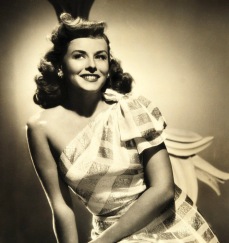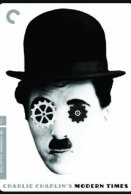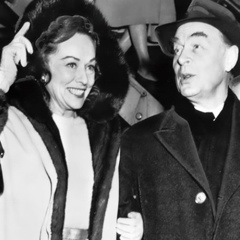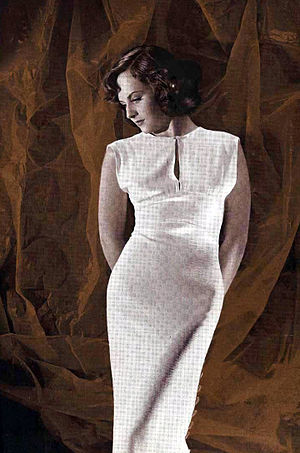Betty Grable featured in 20th Century Fox Pictures, Down Argentine Way.
Arnold had thoroughly
retouched the before and after photos—producing illustration more than
photography—to convey a smooth and beautiful complexion. The tiny before
shot revealed a pretty girl with pale brows and lashes, while the after
showed a lushly made-up young beauty. Tiny print mentioned that Betty Grable was featured in the film Down Argentine Way.
This way, Tom Lyle reasoned, even if the movie tanked, the ad would
still work since it didn't play up the film’s title. In the ad, Betty
was quoted as saying, “It’s easy to have lovely alluring eyes…The magic
secret is Maybelline eye make-up.” Emery’s copy gave step by step
application instructions, ending with: “Then, the joyful climax…when you
form your brows in graceful, classic lines with Maybelline
smooth-marking Eyebrow Pencil.”
Tom Lyle wasn't the only one taking a risk on the film; so was Daryl Zanuck. Twentieth Century Fox studios had been counting on Alice Faye’s
box office power to help solve their financial woes. Would a goofy,
light-hearted romp, set in Argentina appeal to Americans in a year when
dramatic films like The Philadelphia Story and The Grapes of Wrath would
take most of the credits? A few westerns had done well, and Ginger and
Fred were still dancing. Bing Crosby, Bob Hope and Dorothy Lamour had starred in the popular Road to Singapore—which
had nothing to do with Singapore and was oblivious to Japanese
imperialism in the Pacific.
Fox wanted something fresh, and if they couldn’t cavort in Europe or the Pacific, they’d take their fun and games elsewhere. South America seemed like a pretty safe bet. With that lively Brazilian music, movie-goers could transport themselves to a place where war didn’t exist.
Fox wanted something fresh, and if they couldn’t cavort in Europe or the Pacific, they’d take their fun and games elsewhere. South America seemed like a pretty safe bet. With that lively Brazilian music, movie-goers could transport themselves to a place where war didn’t exist.
 |
| Carmen Miranda |
The
gamble paid off. In October of 1940, FDR relieved everyone by saying,
“I have said this before, and I’ll say it again and again: Your boys are
not going to be sent into any foreign wars.” The film opened that same
month, and the public adored Betty Grable and Carmen Miranda
in her outrageous costumes. Revelers everywhere, like Evelyn’s crowd at
the Biltmore, learned to samba to tunes like “Bambu Bambu.” The age of
Carmen Miranda movies and music had begun. Chica Chica Boom Chic!
 |
| Alice Faye |










 Paulette starred alongside Hollywood Legends
Paulette starred alongside Hollywood Legends 










